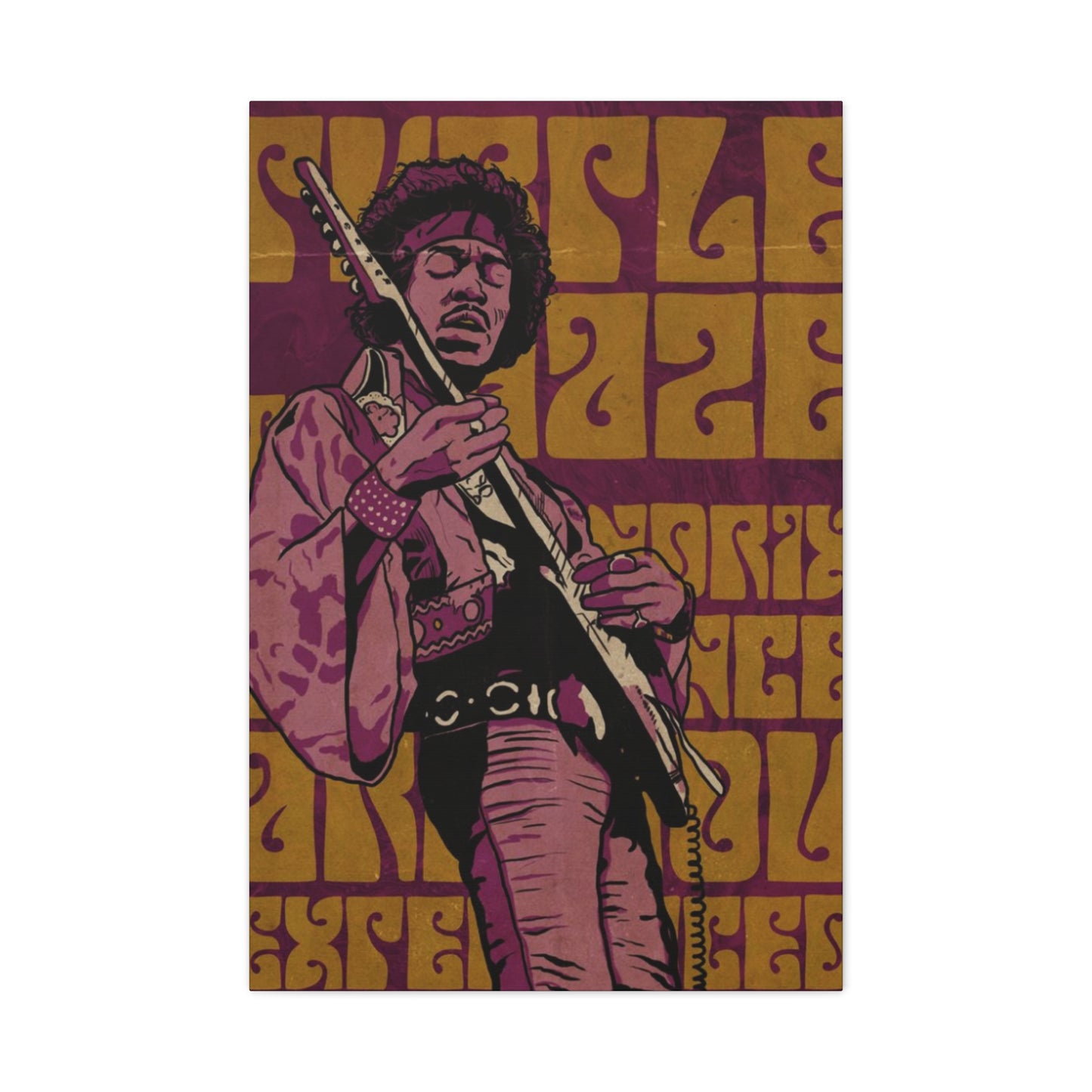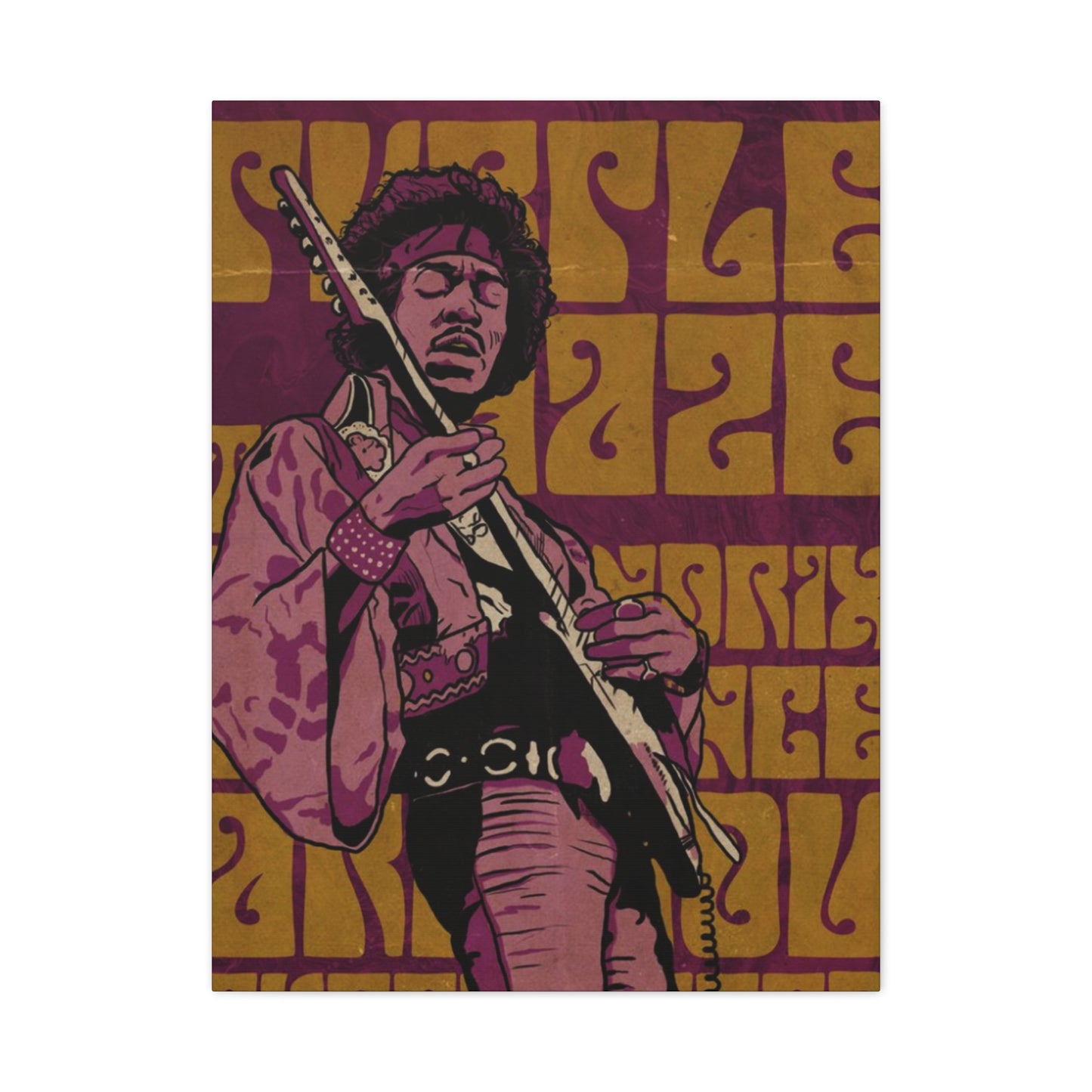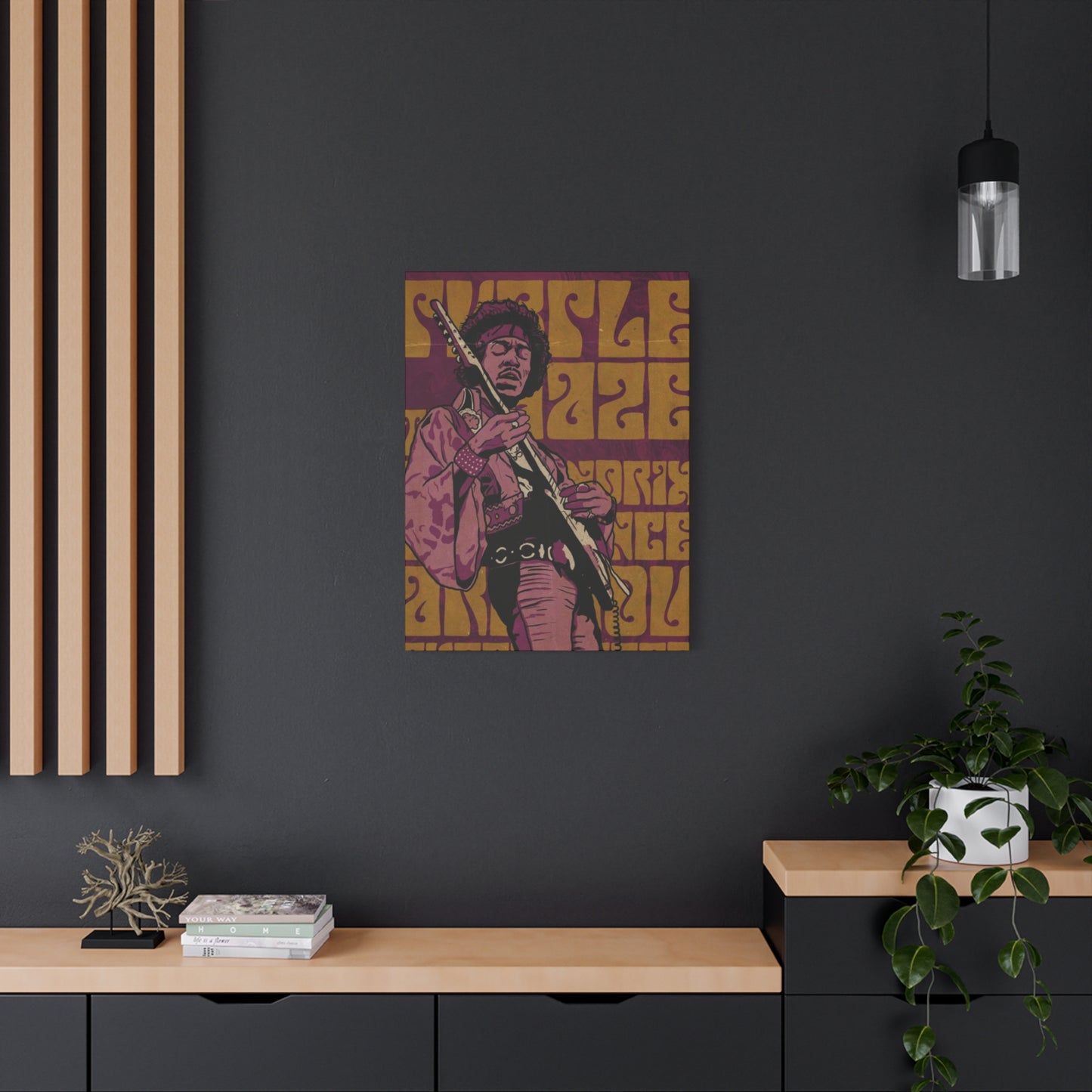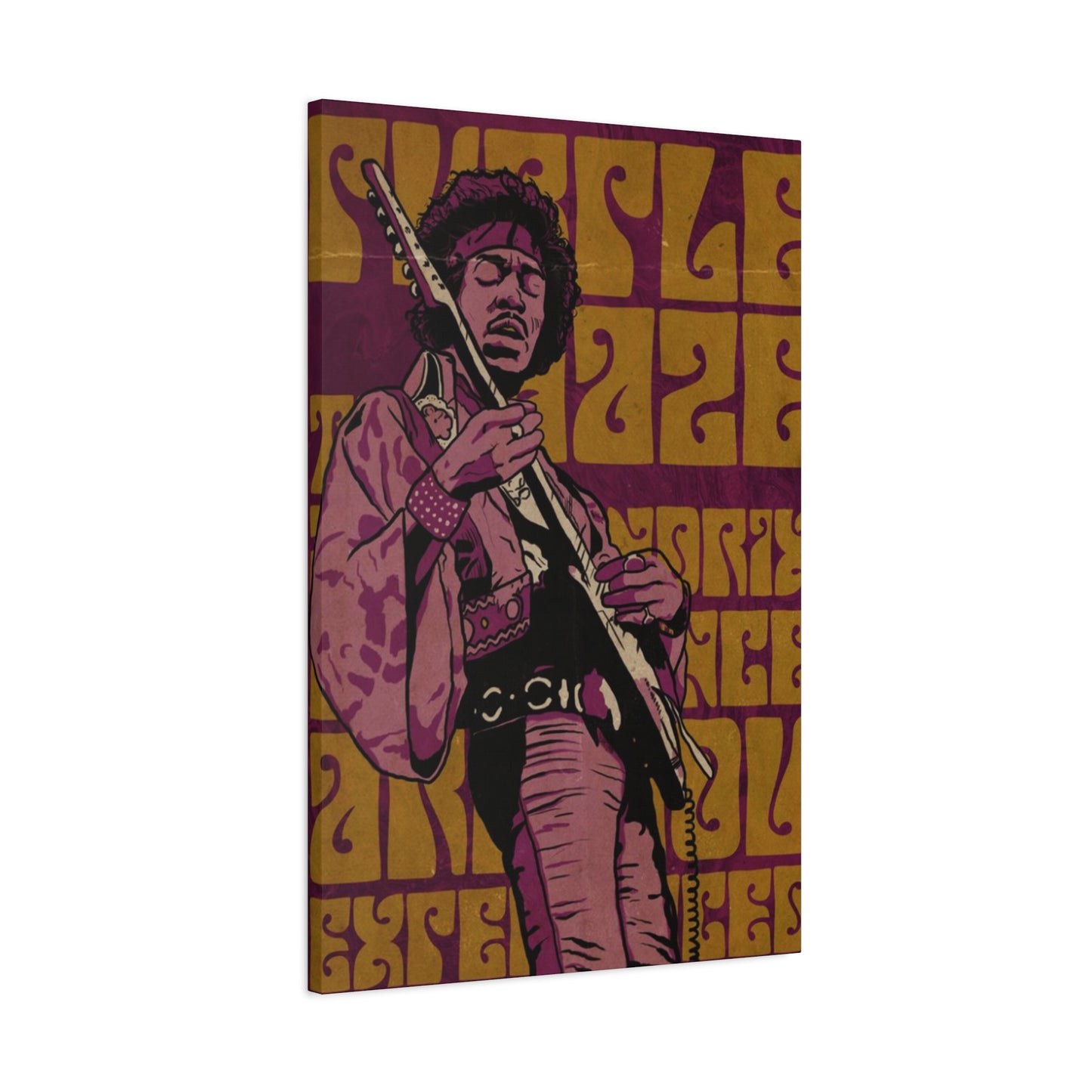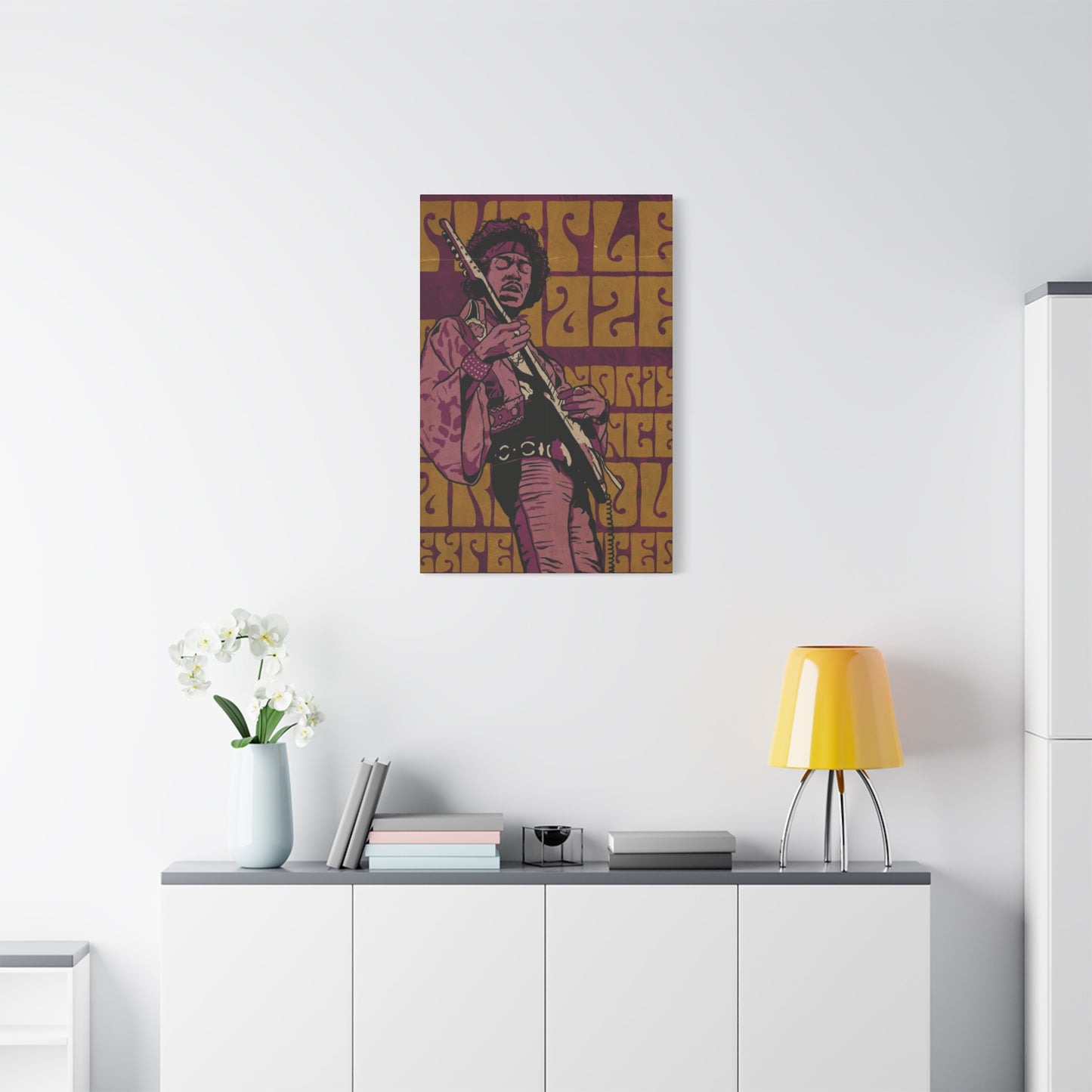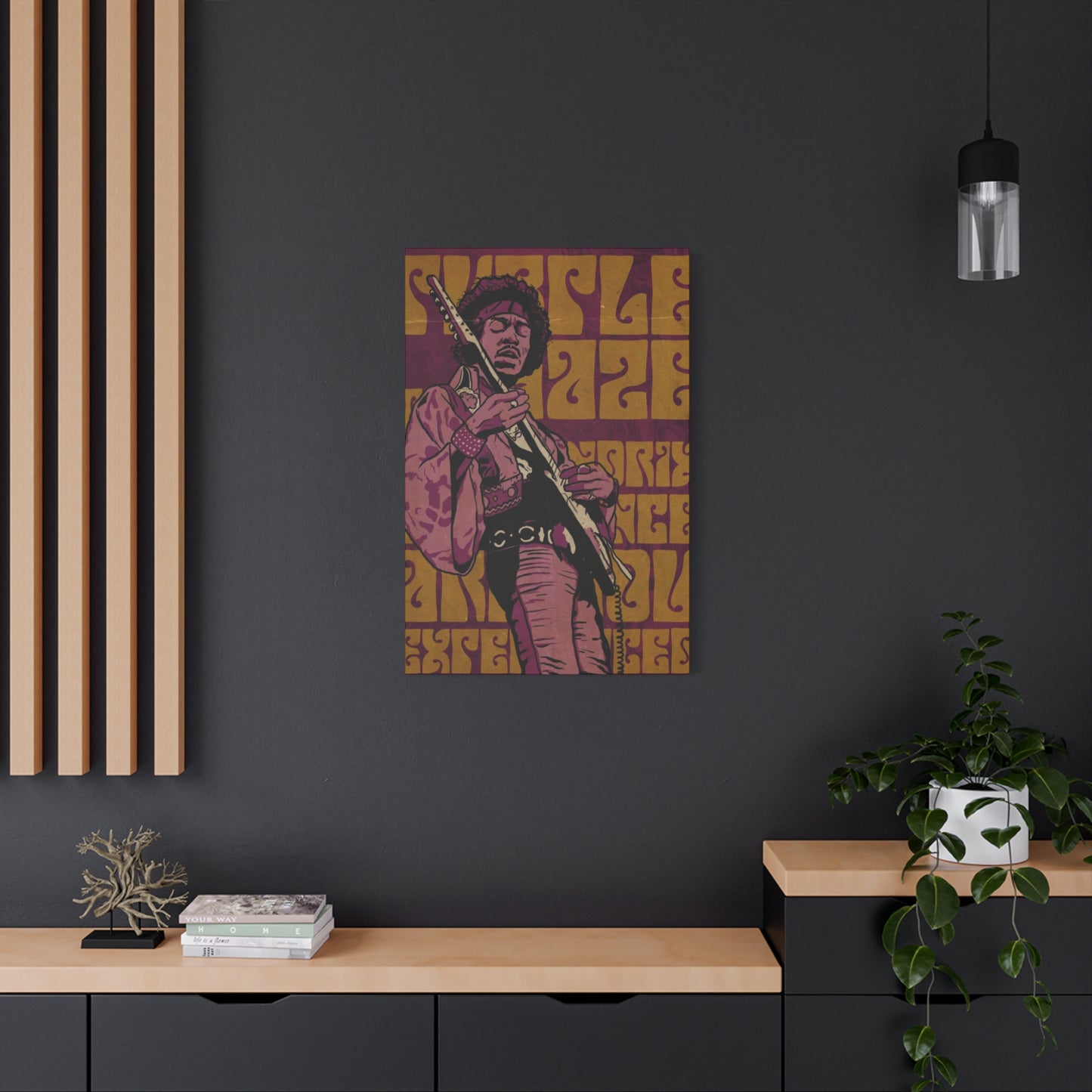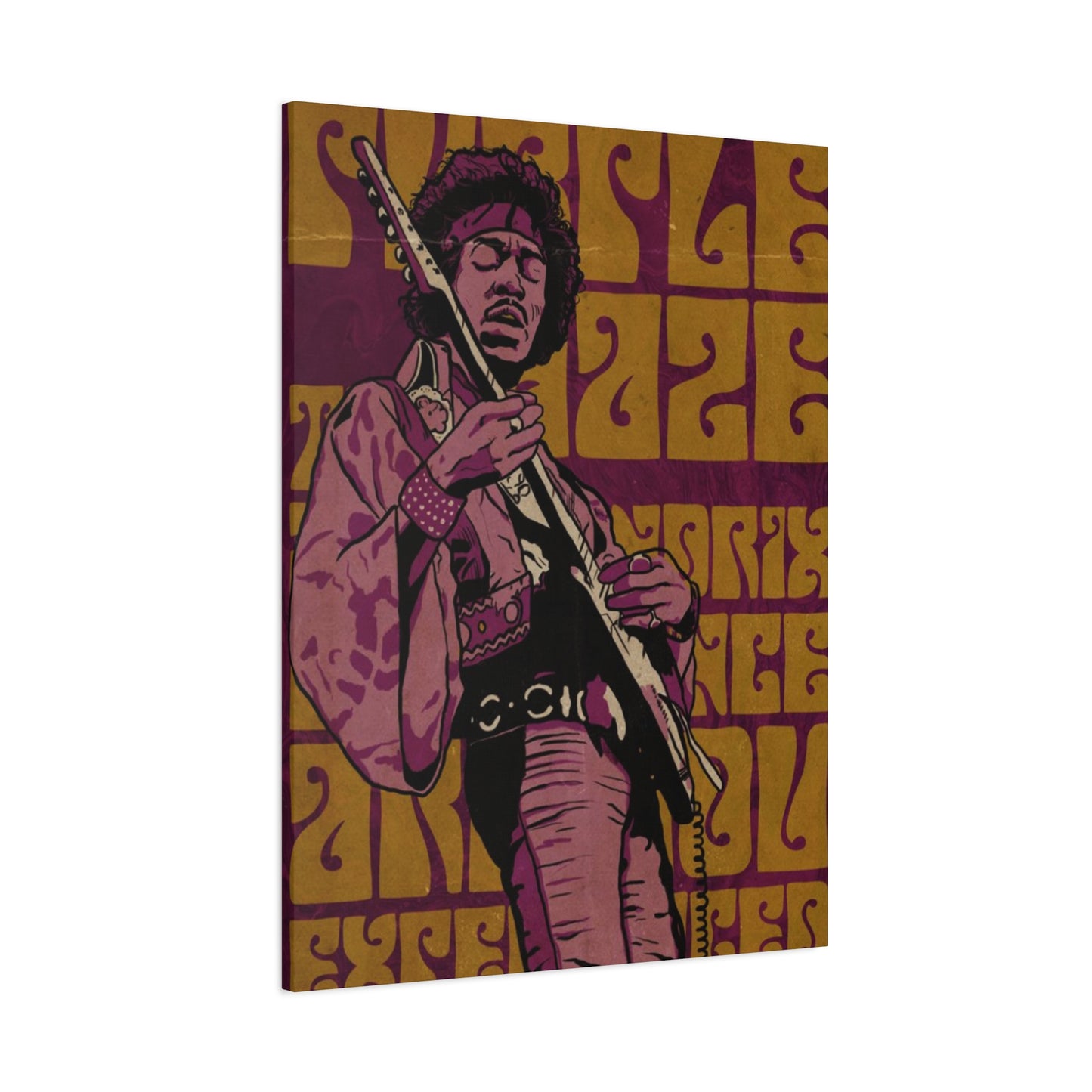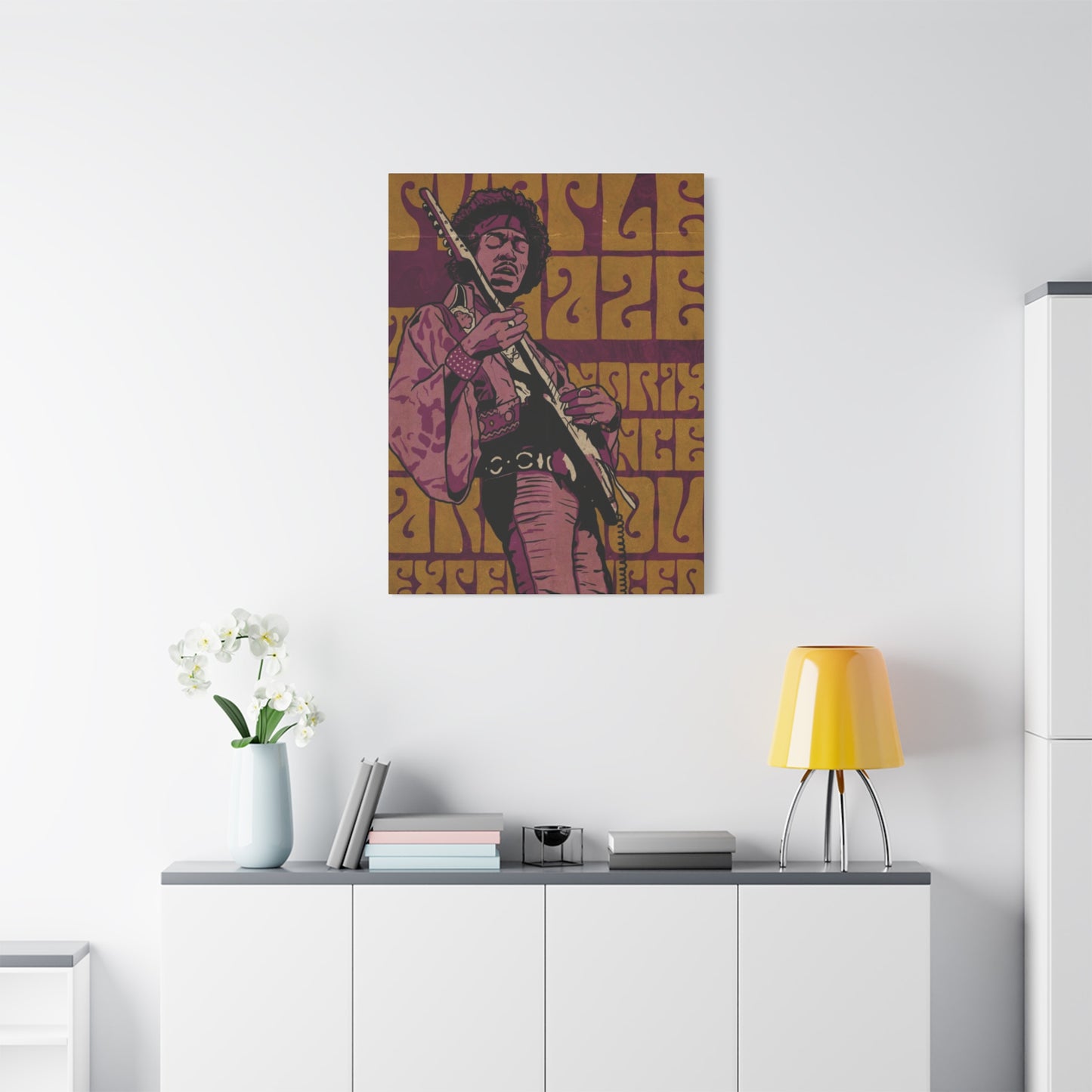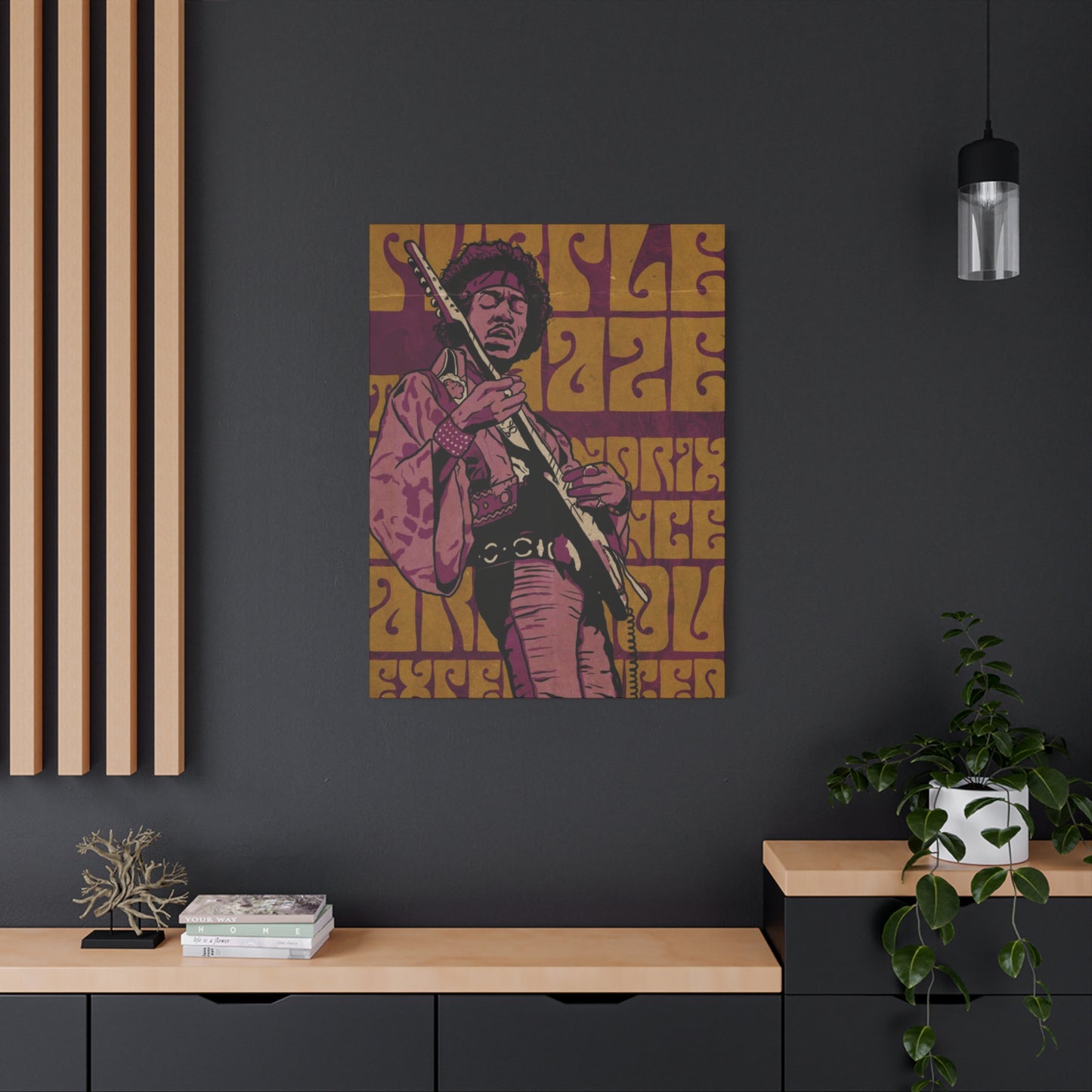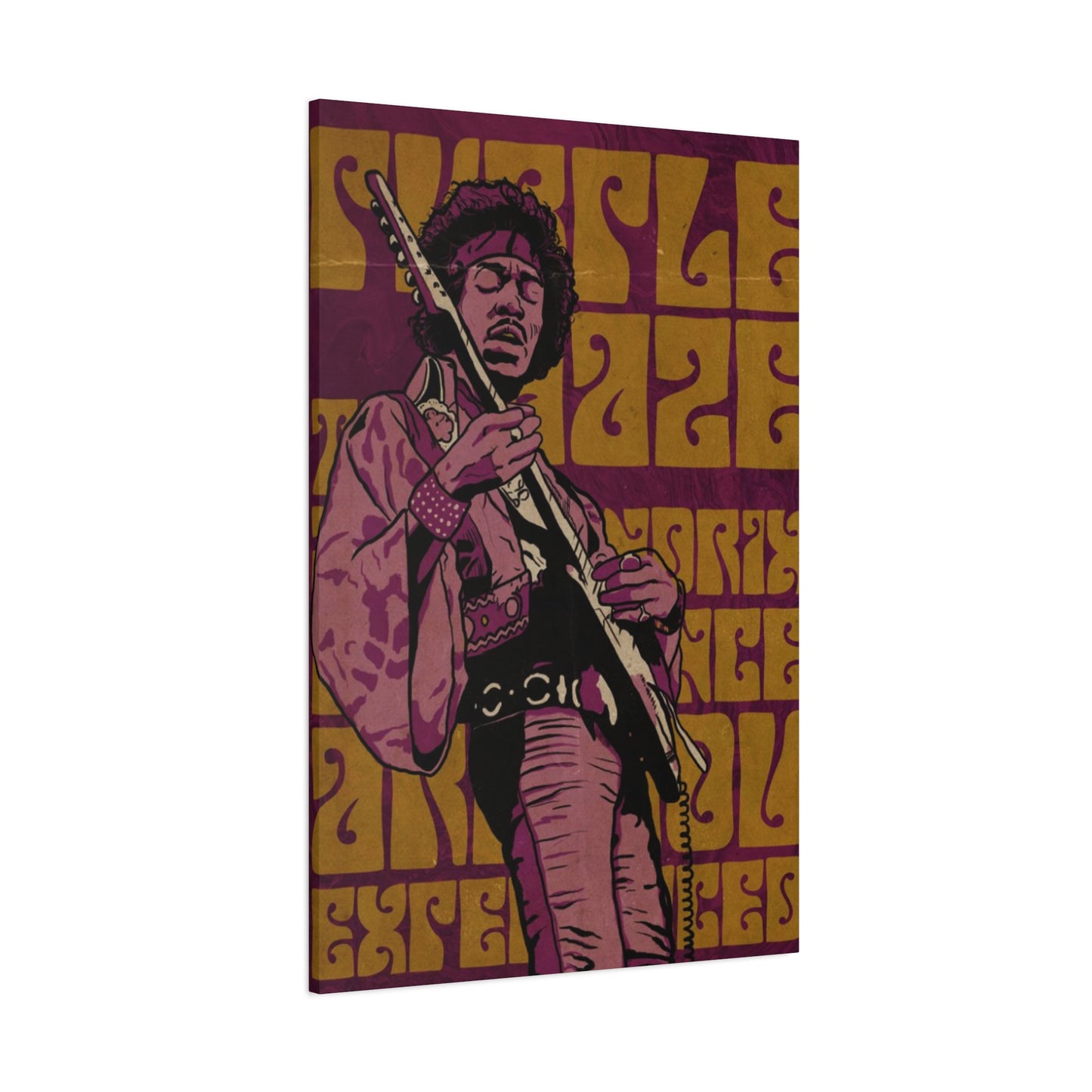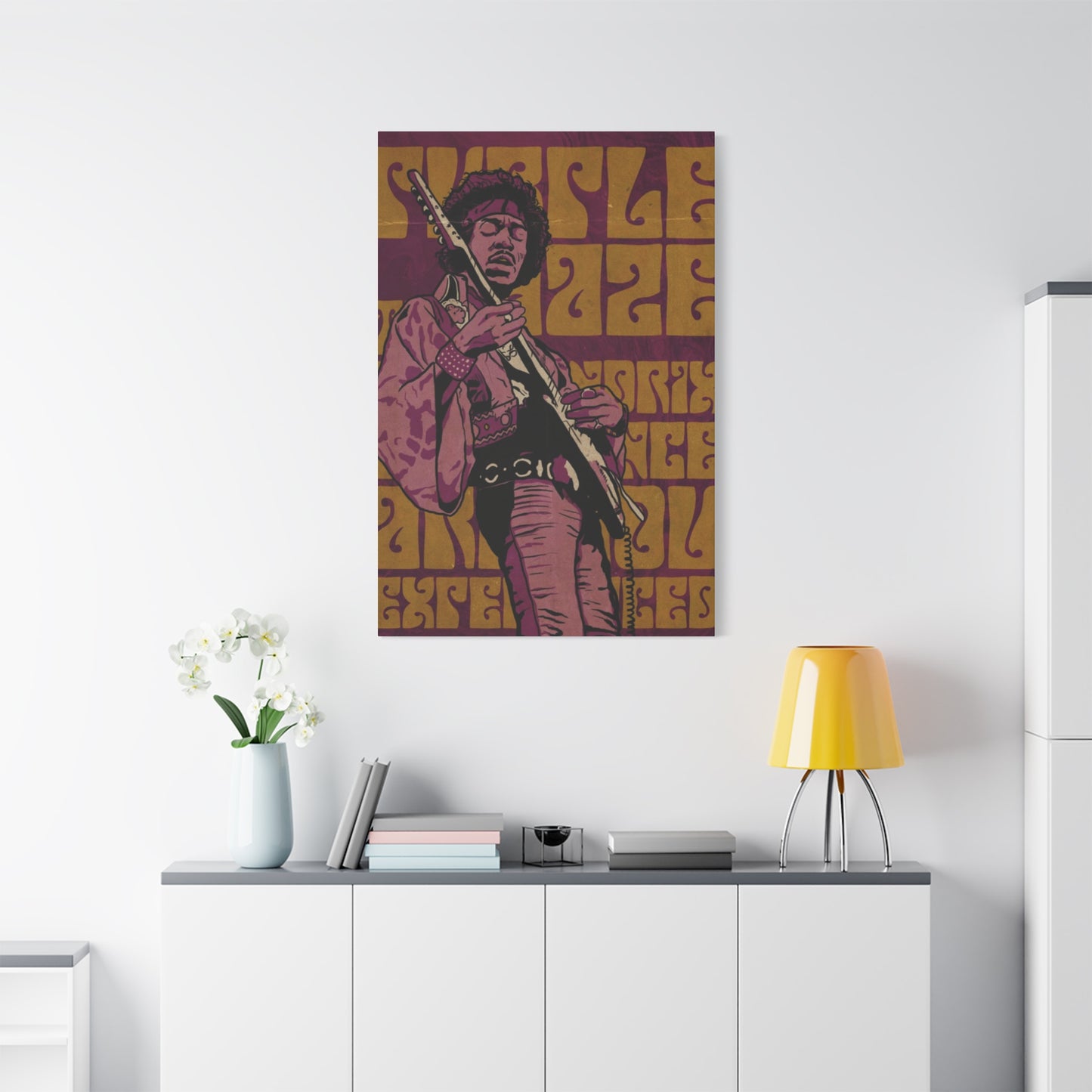Jimi Hendrix Poster Wall Art: Creating an Iconic Music Space in Your Home
The legendary guitarist who revolutionized rock music in the 1960s continues to inspire generations of music lovers and art enthusiasts. Decorating spaces with imagery of this musical pioneer has become a popular way to celebrate his enduring legacy while adding character and style to any room. Visual tributes featuring this iconic musician serve multiple purposes, from honoring his groundbreaking contributions to music history to creating vibrant, energetic atmospheres in living spaces. These decorative pieces range from vintage concert reproductions to modern artistic interpretations, offering something for every taste and interior design preference.
The appeal of featuring this guitar virtuoso's image in home decor transcends mere fandom. His distinctive style, from his flamboyant fashion choices to his revolutionary approach to the electric guitar, represents a cultural moment that defined an entire generation. The visual elements associated with his performances and recordings capture the essence of creativity, rebellion, and artistic innovation that characterized the late 1960s counterculture movement. Today's collectors and decorators appreciate these artistic representations not only for their nostalgic value but also for their bold aesthetic qualities that can transform ordinary walls into dynamic focal points.
Whether you're a devoted admirer of psychedelic rock, a collector of music memorabilia, or simply someone who appreciates striking visual art, incorporating imagery of this legendary performer into your interior design can create powerful statements about your personal taste and cultural appreciation. The wide variety of available designs ensures that you can find pieces that complement your existing decor while celebrating one of music's most influential figures.
The Cultural Significance of Music Icon Imagery in Interior Design
Visual representations of legendary musicians have become increasingly popular in contemporary home decoration. The practice of displaying images of cultural icons serves as a form of personal expression, allowing individuals to communicate their values, interests, and aesthetic preferences through their living spaces. When it comes to figures who fundamentally changed their artistic fields, such visual tributes take on additional meaning, connecting present-day admirers with pivotal moments in cultural history.
The particular guitarist we're discussing left an indelible mark on popular culture that extends far beyond his musical innovations. His brief but explosive career produced imagery that has become synonymous with artistic freedom and creative experimentation. Photographs from legendary performances, album artwork, and candid moments captured by renowned photographers have all contributed to a visual legacy as powerful as his sonic innovations. These images encapsulate not just a musician but an entire era's aspirations and aesthetic sensibilities.
Interior designers and art consultants increasingly recognize the value of incorporating music-themed artwork into residential and commercial spaces. Such pieces provide instant personality and can serve as conversation starters, creating connections between people through shared cultural touchstones. The boldness and energy captured in performance photographs translate well to wall displays, offering visual interest and emotional impact that more conventional artwork might lack. For music venues, recording studios, entertainment spaces, and homes of music enthusiasts, these decorative elements create thematic coherence while honoring artistic heritage.
The psychological impact of surrounding yourself with images of inspirational figures should not be underestimated. Visual reminders of creative excellence can motivate personal expression and remind viewers of the possibilities that emerge from dedication to craft. In this sense, decorative artwork featuring legendary musicians serves not merely as decoration but as daily inspiration, encouraging viewers to pursue their own creative endeavors with similar passion and commitment.
Concert Photography and Its Artistic Value
The golden age of rock photography produced countless iconic images that have achieved artistic recognition independent of their documentary origins. Photographers who captured live performances during the 1960s and 1970s created a visual record of cultural transformation, freezing moments of raw creative energy that defined their era. These photographs possess qualities that elevate them beyond simple documentation, incorporating composition, lighting, and timing that rival any fine art photography.
Images from legendary performances have become some of the most sought-after pieces in the vintage photography market. The spontaneity and authenticity captured in these moments cannot be replicated, making original prints and high-quality reproductions valuable both artistically and historically. The technical challenges of concert photography during this era, when film speeds were slower and stage lighting less sophisticated, make the successful images all the more impressive. Photographers had to combine technical expertise with artistic vision and split-second timing to capture the essence of performances in single frames.
The aesthetic qualities of these vintage concert photographs align perfectly with contemporary design trends that favor authenticity and character. The grain structure of period film, the natural lighting conditions, and the unposed nature of performance photography create visual textures that digital perfection cannot match. These qualities give vintage concert imagery a warmth and immediacy that resonates with modern audiences seeking alternatives to overly polished contemporary photography.
Collectors and decorators particularly value images that capture defining moments or characteristic poses associated with specific performers. For the guitarist in question, photographs showing his innovative playing techniques, his distinctive stage presence, or his connection with audiences carry special significance. These images don't just document performances; they capture the spirit of musical innovation and the physical expression of creative genius. The body language, facial expressions, and environmental context visible in such photographs tell stories that complement the music itself.
Vintage Concert Advertisement Reproductions
Original concert posters from the 1960s have become highly valuable collectibles, with some examples selling for thousands of dollars at auction. These ephemeral items, originally created as disposable promotional materials, have achieved recognition as legitimate art objects representing a specific time and place in cultural history. The distinctive graphic design styles developed for concert promotion during this era combined necessity with innovation, as designers worked within technical limitations while competing for attention in crowded urban environments.
For those who appreciate the aesthetic and historical value of these posters but cannot afford or locate originals, high-quality reproductions offer an accessible alternative. Modern printing technologies can capture the colors, textures, and details of vintage posters with remarkable fidelity, creating pieces that honor the original designs while being suitable for everyday display. The best reproductions use archival materials and printing techniques that ensure longevity, allowing contemporary audiences to enjoy these designs for years to come.
The typography, illustration styles, and compositional approaches used in vintage concert posters reflect the broader graphic design trends of their era while also pioneering techniques that influenced subsequent generations of designers. Hand-lettering, psychedelic illustration, photo-collage, and bold color blocking all appeared in concert posters before becoming mainstream design elements. Studying these posters provides insights into how visual communication evolved during a period of rapid cultural change.
Displaying reproductions of specific concert announcements adds historical specificity to music-themed decor. Rather than generic imagery, these pieces commemorate actual events, connecting viewers to specific moments in music history. For legendary performances that have become part of rock mythology, having visual representations of the original promotional materials creates a tangible link to those historical occasions. This specificity appeals to serious music enthusiasts who appreciate the historical context surrounding their favorite artists and recordings.
Modern Artistic Interpretations and Styles
Contemporary artists continue to find inspiration in iconic musical figures, creating new works that interpret their legacy through modern artistic lenses. These reinterpretations range from photorealistic digital paintings to abstract compositions that use color and form to suggest musical qualities. The freedom contemporary artists enjoy in terms of medium and approach has produced an incredible diversity of works, ensuring that collectors can find pieces that match their personal aesthetic preferences while still celebrating musical heritage.
Pop art techniques remain particularly popular for music-themed artwork, with their bold colors, graphic simplicity, and celebration of popular culture making them natural choices for depicting cultural icons. The high-contrast, simplified forms characteristic of pop art translate well to large-scale wall displays, creating immediate visual impact. Contemporary pop artists working with music subjects often incorporate mixed media elements, combining painting with collage, printmaking, and digital manipulation to create layered, textured works.
Minimalist interpretations offer a sophisticated alternative to more elaborate styles, using restrained color palettes and simplified compositions to create elegant tributes. These works might focus on silhouettes, distinctive equipment, or characteristic poses rendered in monochromatic or limited color schemes. The restraint of minimalist approaches allows these pieces to integrate seamlessly into contemporary interiors while still making meaningful statements about musical appreciation and cultural awareness.
Street art and graffiti-inspired styles have also produced striking music-themed works, bringing urban energy and contemporary relevance to representations of historical figures. The raw, immediate quality of street art aesthetics aligns well with the rebellious spirit associated with rock music, creating visual connections between different forms of creative expression. Artists working in these styles often incorporate text elements, symbolic imagery, and layered compositions that reward extended viewing and contemplation.
Selecting the Right Size and Scale for Your Space
Choosing appropriately sized artwork represents one of the most critical decisions in successful interior decoration. Pieces that are too small for their intended location can appear insignificant and fail to make the desired impact, while oversized works can overwhelm spaces and create visual imbalance. Understanding the relationship between artwork dimensions and wall space helps ensure that decorative pieces enhance rather than detract from overall room aesthetics.
For standard residential walls, general design principles suggest that artwork should occupy roughly two-thirds to three-quarters of the available wall width in a given area. This proportion creates visual balance without making the space feel crowded. However, these guidelines should be adjusted based on ceiling height, furniture arrangement, and personal preferences. In rooms with high ceilings, larger vertical pieces or multiple works arranged in gallery walls can help fill the space appropriately.
The viewing distance for artwork also influences appropriate sizing decisions. Pieces intended to be viewed from across a room can be larger and more boldly designed than those placed in intimate spaces where viewers will examine them from close range. Performance photography with dynamic action works particularly well at larger scales, where the energy and movement captured in the images can be fully appreciated. More detailed or intricate designs benefit from smaller formats that allow viewers to examine the artistic elements closely.
Consider the relationship between artwork and surrounding furniture when determining appropriate sizes. A piece hung above a sofa should generally be at least half the sofa's width to create visual cohesion. Similarly, artwork placed above console tables, credenzas, or other furniture should relate proportionally to the pieces below them. These relationships help create unified vignettes rather than collections of unrelated objects competing for attention.
Framing Considerations and Presentation Options
The frame you choose for artwork significantly impacts how the piece is perceived and how well it integrates into your space. Framing serves both protective and aesthetic functions, safeguarding artwork while enhancing its visual presentation. The enormous variety of available framing styles means that the same print can convey very different impressions depending on how it's framed and matted.
Traditional framing with glass protection offers the highest level of preservation for paper-based prints and photographs. UV-filtering glass or acrylic prevents sun damage that can cause fading over time, particularly important for valuable pieces or those displayed in bright environments. Mat boards create visual separation between the artwork and frame while providing aesthetic breathing room that prevents images from feeling cramped. The width and color of matting dramatically affect the overall presentation, with wider mats creating more formal, gallery-like presentations and colored mats adding additional design possibilities.
Modern frameless mounting techniques offer sleeker, more contemporary alternatives to traditional framing. Float mounting, where prints are adhered to rigid backing boards without visible borders, creates clean, minimalist presentations that work well in modern interiors. Acrylic face-mounting, where prints are bonded to clear acrylic sheets, produces particularly striking results with a glossy, dimensional quality that enhances colors and creates depth. These contemporary mounting methods eliminate the visual weight of frames, allowing artwork to appear to float on walls.
Canvas wraps and stretched canvas prints provide another popular presentation option, particularly for photographic images and digital artwork. The gallery-wrap technique, where the image continues around the sides of the stretcher bars, eliminates the need for framing entirely and creates a finished appearance from all viewing angles. Canvas presentations add textural interest and a more casual, artistic feel compared to framed prints. The dimensional quality of stretched canvas creates subtle shadows that add visual interest to walls.
Creating Gallery Walls and Multiple Piece Arrangements
Arranging multiple artworks together creates dynamic visual displays that can transform entire walls into artistic statements. Gallery wall arrangements allow for creative expression through the selection, combination, and arrangement of various pieces. This approach works particularly well for music-themed collections, where you might combine performance photographs, artistic interpretations, album artwork reproductions, and related memorabilia into cohesive displays.
Planning gallery wall arrangements requires attention to both individual pieces and their relationships to each other. Successful arrangements balance visual weight, distributing larger or more visually dominant pieces throughout the arrangement rather than clustering them in one area. Color distribution also matters, with effective arrangements spreading color harmoniously rather than creating jarring concentrations of particular hues. The spacing between pieces affects the overall impression, with tighter spacing creating more energetic, collected aesthetics and wider spacing producing more formal, gallery-like presentations.
Several arrangement strategies can guide your gallery wall planning. Grid arrangements, where pieces of uniform size are hung in regular rows and columns, create orderly, contemporary presentations with graphic impact. Salon-style arrangements, featuring works of varying sizes hung closely together in organic arrangements, evoke the aesthetic of traditional art galleries and create rich, layered presentations. Symmetrical arrangements centered around a focal piece or central axis create balanced, formal presentations, while asymmetrical arrangements offer more dynamic, casual aesthetics.
Before committing to nail holes, creating templates from paper or cardboard allows you to test different arrangements. Taping these templates to walls lets you visualize how different configurations will look and make adjustments before installation. This planning phase proves particularly valuable for large or complex arrangements where mistakes would be costly. Taking measurements carefully and marking positions precisely ensures that your planned arrangement translates successfully from concept to reality.
Lighting Techniques to Enhance Visual Impact
Proper lighting dramatically affects how artwork is perceived and appreciated. Strategic illumination can enhance colors, create dramatic effects, and draw attention to important pieces within larger rooms. Understanding various lighting approaches and their effects helps you showcase your music-themed artwork to best advantage.
Picture lights, mounted directly above or below artwork, provide focused illumination specifically designed to highlight displayed pieces. These dedicated fixtures eliminate glare while ensuring even illumination across the entire surface of the work. LED picture lights offer energy-efficient operation and produce minimal heat, making them safe for use with valuable or delicate pieces. The directional nature of picture lights draws attention to specific works, making them effective for highlighting prized pieces within larger collections.
Track lighting and adjustable spot lights offer flexible alternatives to fixed picture lights, allowing you to direct illumination precisely where needed. This approach works particularly well in spaces where you might want to reconfigure artwork periodically, as the lighting can be adjusted to accommodate different arrangements. Dimming capabilities add additional versatility, allowing you to adjust light intensity based on time of day, ambient light conditions, and desired mood.
Natural lighting requires careful consideration, as while it can beautifully illuminate artwork, it also poses risks. Direct sunlight can cause fading and deterioration over time, particularly for paper-based prints and photographs. If displaying artwork in areas with significant natural light, positioning pieces away from direct sun exposure and using UV-filtering glass or acrylic provides necessary protection. Alternatively, using rotating displays where valuable pieces are periodically rested in darker storage helps distribute light exposure.
Ambient room lighting also affects how artwork appears, with the color temperature of light sources influencing perceived colors in displayed pieces. Warm-toned lighting (2700-3000K) creates cozy atmospheres but can shift color perception toward yellows and reds. Neutral white lighting (3500-4100K) provides more accurate color rendering, while cool white lighting (5000K+) can make colors appear crisper but potentially harsher. Considering these characteristics when selecting both artwork and lighting helps ensure successful results.
Materials and Printing Quality Considerations
The materials and printing methods used to produce artwork significantly affect its appearance, longevity, and value. Understanding these technical aspects helps you make informed purchasing decisions and ensures that you acquire pieces appropriate for your needs and budget.
Giclée printing represents the gold standard for fine art reproduction, using archival pigment inks and specialized printers to achieve exceptional color accuracy and detail. The term, derived from French meaning "to spray," refers to the inkjet technology used, though giclée specifically indicates museum-quality output using archival materials. Giclée prints on appropriate substrates can last over a century without noticeable fading when properly displayed and cared for. The superior color gamut achievable with giclée printing makes it particularly appropriate for reproducing colorful artwork and photography where accurate color representation matters.
Paper selection profoundly impacts the final appearance of printed artwork. Fine art papers designed specifically for giclée printing come in various weights, textures, and finishes. Smooth papers provide crisp detail and are appropriate for photographic images, while textured papers add tactile dimension and can enhance certain artistic styles. Paper weight, measured in grams per square meter (GSM), indicates thickness and durability, with heavier papers (250+ GSM) providing substantial feel and enhanced durability. Acid-free, archival papers resist yellowing and deterioration, ensuring that prints maintain their appearance over time.
Canvas printing offers different aesthetic qualities compared to paper prints, with textured surfaces adding dimension and a more painterly appearance. High-quality canvas substrates designed for printing provide consistent surfaces that accept inks uniformly. The stretching and preparation of canvas significantly affects the final presentation, with gallery-wrap techniques providing professional finished appearances. Many collectors prefer canvas for larger pieces where the texture adds visual interest and reduces the institutional feel of framed paper prints.
Metal and acrylic printing technologies create distinctive contemporary presentations with vivid colors and unique dimensional qualities. Metal prints infuse images directly into specially coated aluminum, creating water-resistant, extremely durable pieces with luminous quality and vibrant colors. Acrylic printing layers images behind clear acrylic sheets, producing glass-like presentations with depth and brilliant color saturation. These alternative substrates work particularly well for modern artistic interpretations and can create stunning focal points in contemporary interiors.
Sourcing Authentic and Licensed Reproductions
The market for music-themed artwork includes both legitimate licensed products and unauthorized reproductions, making it important for collectors to understand sourcing and licensing considerations. Purchasing properly licensed merchandise ensures that you receive quality products while also supporting the artists, photographers, and estates that own the rights to the original works.
Licensed reproductions are created with permission from rights holders and typically meet specific quality standards. These products use authorized images and often feature certificates of authenticity or other documentation verifying their legitimacy. Licensed manufacturers invest in quality materials and printing processes because their reputations depend on customer satisfaction. While licensed products typically cost more than unauthorized alternatives, the quality difference usually justifies the premium, and the peace of mind knowing you've purchased legitimate merchandise adds intangible value.
Official estate-authorized products represent the highest tier of legitimacy for artwork featuring deceased artists. The estates of legendary musicians often partner with specific manufacturers or galleries to produce authorized merchandise using approved images. These products may include special documentation, limited edition numbering, or other features that distinguish them from mass-market reproductions. For serious collectors, estate-authorized pieces can increase in value over time, particularly limited editions or pieces associated with significant anniversaries or commemorations.
Independent artists creating original works inspired by musical figures occupy a different category, producing interpretive pieces rather than reproductions. These artists legally create new works based on their own artistic visions, with the musical figures serving as inspiration rather than the work being direct reproductions of existing photographs or artwork. Supporting independent artists contributes to living creative communities while acquiring unique pieces not available through mass-market channels.
Online marketplaces and specialty retailers offer convenient access to wide selections of music-themed artwork. However, the ease of online reproduction has also proliferated unauthorized products of dubious quality. Researching sellers, reading reviews, and looking for indicators of legitimacy helps you avoid disappointment. Established retailers specializing in music memorabilia and licensed products typically provide better quality and customer service than general marketplace sellers offering suspiciously cheap products.
Preserving and Maintaining Your Collection
Proper care and maintenance extend the life of artwork and preserve its appearance for future generations. Environmental factors, handling practices, and display conditions all affect how well pieces age over time. Understanding conservation principles helps you protect your investment and ensure that your collection remains beautiful for years to come.
Environmental control represents the foundation of art preservation. Temperature and humidity fluctuations cause materials to expand and contract, leading to warping, cracking, or delamination over time. Maintaining stable conditions with moderate temperature (65-75°F) and relative humidity (40-50%) provides optimal preservation. Avoid displaying artwork near heating vents, air conditioning units, fireplaces, or other sources of temperature extremes. Similarly, avoid bathrooms, kitchens, and other areas with high humidity or temperature fluctuations.
Light exposure, already mentioned regarding natural lighting, bears emphasizing as one of the most significant threats to artwork longevity. All light causes some degree of fading over time, with ultraviolet radiation being particularly damaging. Using UV-filtering glass or acrylic, limiting direct sun exposure, and keeping overall light levels moderate all contribute to preservation. For particularly valuable pieces, consider displaying them in lower-light conditions or rotating them periodically with less valuable works to distribute light exposure.
Handling artwork properly prevents physical damage. Always handle framed pieces by their frames rather than touching the artwork surface or glass. Oils from skin can cause permanent damage to papers and photographs. When cleaning framed pieces, use dry, lint-free cloths on glass surfaces and avoid any cleaning products that might seep behind glass and contact artwork. For canvas works, dust gently with soft brushes, never applying liquid cleaners directly to surfaces.
Regular inspection helps identify problems before they become serious. Check for signs of fading, discoloration, insect damage, mold growth, or other issues periodically. Catching problems early often allows for remediation that would be impossible once damage becomes extensive. For valuable pieces showing signs of deterioration, consult professional conservators rather than attempting repairs yourself, as improper intervention can cause additional damage.
Music Room and Studio Design Applications
Dedicated music spaces, whether for listening, practice, or recording, benefit particularly from thoughtful music-themed decoration. These environments offer opportunities to create immersive experiences that celebrate musical heritage while also serving practical functions. The visual elements in such spaces contribute to their overall atmosphere and can inspire creativity and appreciation.
Home listening rooms designed for serious audio enjoyment benefit from artwork that complements the audiophile experience. Visual tributes to legendary musicians and recordings create appropriate atmosphere while also serving acoustic functions. Large canvas pieces can provide diffusion surfaces that help manage room acoustics, while still contributing aesthetically. The focused nature of dedicated listening spaces makes them appropriate locations for more elaborate gallery wall arrangements or museum-quality pieces that can be appreciated during extended listening sessions.
Practice spaces and home studios for working musicians can benefit from inspirational imagery featuring legendary performers. Visual reminders of musical excellence can motivate practice and creativity, making these spaces more conducive to productive work. The casual nature of practice spaces allows for more eclectic or experimental approaches to decoration, with musicians often displaying works that reflect their specific influences and aspirations. The forgiving acoustics requirements of practice spaces mean that artwork choices can focus purely on aesthetic and inspirational considerations.
Recording studios and production facilities often feature music-themed artwork as part of their professional identity. These commercial or semi-professional spaces use visual elements to communicate their musical expertise and create comfortable, inspiring environments for artists. The artwork in studios serves multiple functions, impressing clients, creating appropriate atmosphere for creative work, and expressing the facility's musical philosophy and influences. Professional environments typically require more polished, sophisticated presentations than casual home spaces.
Performance spaces and venues, from small clubs to home entertainment areas, use music-themed decoration to establish their identity and create immersive experiences for audiences and performers. Historical concert photography works particularly well in these contexts, connecting contemporary performances with musical heritage. The scale of these spaces often accommodates larger pieces that might overwhelm residential rooms, and the public or semi-public nature of performance venues makes them appropriate locations for bold, dramatic design choices.
Combining with Other Music Memorabilia
Music-themed artwork often forms part of larger collections that include various types of memorabilia. Successfully combining different elements requires consideration of how various pieces relate to each other visually and thematically. Thoughtful curation creates cohesive displays that tell stories about musical interests and history rather than appearing as random accumulations of unrelated objects.
Vintage instruments make natural companions to music-themed artwork, with guitars, drum heads, keyboards, and other equipment serving as three-dimensional sculptural elements. Mounting instruments on walls creates striking visual displays while also solving storage challenges. The curves and lines of instruments provide organic counterpoints to rectangular artwork, adding visual variety and textural contrast. When displaying instruments alongside artwork, consider color coordination and thematic connections, perhaps pairing images of specific performers with instruments associated with their style or era.
Original vinyl records and album covers contribute authentic vintage elements while providing additional colorful graphics that complement artwork. Frame-mounting particularly significant or visually interesting album covers creates affordable display pieces that work well in gallery wall arrangements. Consider dedicating wall space to grid arrangements of framed album covers, creating colorful, graphic displays that celebrate recording history. The square format of album covers provides useful visual contrast to rectangular prints and photographs.
Concert tickets, backstage passes, and other ephemera can be incorporated into shadow box displays that tell stories about specific events or periods. Combining multiple related items creates narratives that individual pieces cannot convey alone. Shadow box arrangements work well as focal points within larger music-themed displays, providing visual variety and intimate details that reward close examination. The three-dimensional nature of shadow boxes adds depth to otherwise flat wall arrangements.
Audio equipment, particularly vintage pieces with distinctive designs, can serve as sculptural elements within music-themed spaces. Classic amplifiers, turntables, reel-to-reel tape machines, and similar equipment combine functional and aesthetic appeal. These pieces connect with music-themed artwork through shared subject matter while adding textural and dimensional variety to displays. The combination of visual tributes to musicians and the equipment they used creates comprehensive environments celebrating both the artists and the technology that captured their performances.
Investment Potential and Collectibility
While most people acquire music-themed artwork primarily for personal enjoyment and decoration, understanding the factors that affect collectibility and value provides useful context for purchasing decisions. Some pieces genuinely appreciate in value over time, while others remain primarily decorative with little investment potential. Distinguishing between these categories helps collectors make informed decisions appropriate to their goals.
Original concert posters from significant historical events represent the most consistently valuable category of music-related collectibles. Posters from legendary performances at famous venues, particularly those designed by recognized poster artists, regularly command substantial prices at auction. Condition dramatically affects value, with pristine examples worth many times more than damaged pieces. For those interested in investment potential, focusing on rare posters from historically significant events offers the best prospects for appreciation.
Vintage photographs printed during artists' lifetimes or shortly thereafter carry more value than later reproductions, with signed prints by recognized photographers commanding premium prices. The photography market generally values vintage prints over later editions, even when later editions are authorized and produced to high quality standards. Collectors interested in investment potential should focus on limited editions from recognized photographers, preferably with documentation establishing provenance and edition information.
Contemporary fine art pieces by established artists appreciate based on the artist's overall market rather than primarily on their music-related subject matter. These works follow art market dynamics, with value driven by the creator's reputation, exhibition history, and critical reception. For collectors interested in acquiring works by living artists, researching the artists' careers and market presence provides insight into potential value trajectories.
Mass-produced decorative prints, while perfectly appropriate for their intended purpose, generally have minimal investment potential. These items serve aesthetic rather than financial purposes, and purchasing decisions should focus on personal enjoyment rather than future value. Understanding this distinction helps prevent disappointment and allows collectors to allocate resources appropriately between decorative pieces for immediate enjoyment and investment-grade items acquired for potential appreciation.
Digital Options and Custom Creation Services
Technological advances have democratized access to high-quality music-themed artwork while also enabling customization options previously available only to those with significant resources. Digital printing services, online design tools, and custom creation services allow individuals to create unique pieces tailored to their specific preferences and spaces.
Print-on-demand services offer access to vast catalogs of licensed and independent artwork without requiring large inventories or upfront costs. These platforms allow you to select images, choose sizes, and specify materials and framing options, with items produced only after ordering. This model provides enormous selection and flexibility while often offering competitive pricing compared to traditional retail. The quality of print-on-demand services varies significantly, so researching providers and reading reviews helps ensure satisfactory results.
Custom printing services allow you to create pieces using your own images or designs, subject to copyright restrictions. These services can produce museum-quality prints from digital files, enabling you to create unique pieces unavailable through commercial channels. This capability opens creative possibilities for those with graphic design skills or access to unique photographic materials. Custom printing also allows you to optimize sizes and orientations for specific spaces, ensuring perfect fits that mass-produced pieces cannot match.
Digital artwork and NFTs represent emerging categories in music-related collectibles, existing as digital files rather than physical objects. While physical display remains the preference for most decorators, digital art can be displayed using digital frames or screens that simulate traditional artwork while allowing for changing displays. The value and future of digital art markets remain subjects of debate, but the technology enables new forms of artistic expression and collecting.
Online design tools and services connect collectors with independent artists for commissioned custom pieces. These platforms facilitate the creation of truly unique artwork based on your specific vision and requirements. Working with artists on custom pieces allows you to incorporate specific elements, color preferences, or stylistic approaches while supporting living creators. Custom commissions typically require longer lead times and higher costs than purchasing existing works, but the resulting unique pieces may justify the additional investment for collectors seeking one-of-a-kind items.
Styles for Different Interior Design Aesthetics
Music-themed artwork can complement virtually any interior design style when pieces are thoughtfully selected and presented. Understanding how different artistic styles and presentation approaches align with various design aesthetics helps ensure that your music-related pieces enhance rather than conflict with your overall interior design vision.
Traditional and classic interior styles can incorporate music-themed artwork through formal presentations and more subdued color palettes. Black and white photography in traditional frames with generous matting creates sophisticated presentations that honor classical design principles while celebrating musical heritage. Opting for quieter performance photographs or portraits rather than high-energy concert shots maintains the visual calm characteristic of traditional interiors.
Modern and contemporary spaces naturally accommodate bolder, more colorful music-themed artwork, with clean presentations and strong visual impact aligning with contemporary design values. Frameless mounting techniques, oversized formats, and graphic interpretations work particularly well in modern contexts.
Industrial and urban loft aesthetics embrace music-themed artwork with particular enthusiasm, as the raw, authentic qualities of concert photography and street art-inspired interpretations complement exposed brick, metal, and concrete surfaces. These spaces can accommodate large-scale pieces and bold color choices that might overwhelm more delicate interiors. The cultural authenticity associated with legendary musicians aligns perfectly with the genuine materials and honest construction celebrated in industrial design.
Bohemian and eclectic interiors offer maximum flexibility for music-themed artwork, welcoming vibrant colors, mixed styles, and layered presentations. Gallery wall arrangements combining various artistic approaches, periods, and formats thrive in bohemian settings where visual richness and personal expression are celebrated. The free-spirited aesthetic associated with legendary rock musicians naturally complements bohemian design philosophies.
Mid-century modern interiors can incorporate music-themed artwork through period-appropriate selections and presentations. Vintage concert posters from the 1960s align chronologically with mid-century design, creating harmonious combinations of furniture and artwork from the same era. The bold graphics and colors typical of 1960s poster design complement the clean lines and organic forms of mid-century furniture.
Scandinavian and Nordic design aesthetics, with their emphasis on simplicity and natural materials, require more restrained approaches to music-themed artwork. Black and white photography, minimalist graphic interpretations, and carefully edited displays work best in these contexts. The key is maintaining the visual calm and spatial openness characteristic of Scandinavian design while still incorporating meaningful personal elements.
Commercial Applications and Business Environments
Music-themed artwork finds applications beyond residential settings, with commercial establishments using such pieces to establish identity, create atmosphere, and communicate brand values. Understanding how businesses leverage music-related visual elements provides inspiration for personal applications while also highlighting the universal appeal of musical imagery.
Restaurants and bars frequently employ music-themed artwork to establish distinctive atmospheres and communicate their cultural positioning. Establishments featuring live music naturally incorporate imagery celebrating musical heritage, creating cohesive experiences where visual and sonic elements reinforce each other. Even restaurants without live music use musical imagery to suggest energy, creativity, or connection to specific cultural traditions. The selection of featured musicians communicates much about an establishment's target audience and desired atmosphere.
Retail environments, particularly those selling music-related products or targeting youth markets, use music-themed artwork extensively. Record stores, musical instrument retailers, and fashion boutiques targeting music enthusiasts all employ visual tributes to legendary musicians as part of their brand identities. These commercial applications demonstrate how powerfully musical imagery communicates values and cultural affiliations, making it useful for businesses seeking to establish authentic connections with music-loving customers.
Office environments and creative workspaces increasingly incorporate music-themed artwork as part of efforts to create inspiring, personality-rich environments. Companies in creative industries particularly embrace music-related visual elements, using them to signal creative values and inspire innovative thinking. The shift away from corporate blandness toward more personalized, authentic workplace design has created opportunities for meaningful artwork that reflects company culture and employee interests.
Hotels and hospitality venues use music-themed artwork to create distinctive identities and memorable guest experiences. Music-themed hotels devoted to celebrating local musical heritage or specific genres create immersive environments where artwork plays crucial roles. Even establishments without specific music themes often incorporate music-related elements to add character and cultural depth to otherwise generic spaces.
Educational institutions, particularly those with strong music programs, display music-themed artwork to celebrate musical excellence and inspire students. Practice rooms, performance halls, and music classrooms benefit from visual reminders of what dedicated musicians can achieve. Educational settings also use music-themed artwork to connect students with cultural history and demonstrate the lasting impact of artistic achievement.
Regional and Cultural Variations in Musical Imagery
While certain musicians achieve global recognition and their imagery resonates internationally, regional preferences and cultural contexts influence how music-themed artwork is selected and displayed. Understanding these variations provides insight into how musical heritage connects with local identities and cultural pride.
American markets show strong preferences for homegrown rock legends, with imagery celebrating American musical innovations appearing frequently in residential and commercial settings throughout the country. Regional variations exist, with southern states emphasizing blues and country influences, while coastal urban areas favor rock and punk aesthetics. The diversity of American musical traditions provides rich material for location-specific artistic choices that celebrate local heritage.
European markets demonstrate sophisticated appreciation for both American and European musical figures, with British rock musicians receiving particular attention in UK markets while continental Europe celebrates both international stars and local musical heroes. The deep musical traditions of European countries provide context for how imported rock music was received and interpreted, creating interesting fusion aesthetics that combine traditional European artistic sensibilities with rock rebellion.
Asian markets, particularly in countries with developed rock music scenes like Japan, show passionate engagement with Western rock icons while also celebrating local artists who adapted Western musical forms to local contexts. The visual presentation of music-themed artwork in Asian markets sometimes reflects different aesthetic preferences regarding color, composition, and framing, creating interesting variations on familiar imagery.
Latin American countries with rich musical traditions often blend celebration of international rock legends with pride in local musical innovations. The visual vibrancy characteristic of Latin American art and design translates well to music-themed artwork, with bold colors and dynamic compositions feeling culturally appropriate. Markets in these regions show particular appreciation for musicians who incorporated Latin influences into their work or who explicitly celebrated cultural diversity.
Australian and New Zealand markets demonstrate strong affinity for rock music and related visual culture, with both imported imagery and celebration of local musical achievements appearing in residential and commercial settings. The relatively small populations of these markets create tight-knit music communities where visual celebration of musical heritage plays important roles in cultural identity.
Music Genre Expansion Beyond Rock
While rock music and related imagery dominate much music-themed artwork, other genres offer equally rich visual traditions and cultural significance worthy of celebration. Expanding beyond single genres creates more diverse and inclusive music-themed spaces while honoring the full spectrum of musical achievement.
Jazz musicians and the visual culture surrounding jazz offer sophisticated alternatives with distinctive aesthetic qualities. The photography, graphic design, and overall visual culture associated with jazz from the 1950s and 1960s carries timeless elegance that works beautifully in refined interiors. Blue Note album covers in particular represent design excellence that functions as fine art independent of musical content. The intimate club settings typical of jazz photography create moodier, more contemplative atmospheres than high-energy rock concert imagery.
Blues heritage and visual traditions document foundational music that influenced virtually all subsequent American popular music. Images of blues legends carry historical weight and cultural significance deserving recognition. The often stark, documentary quality of blues photography captures authenticity and emotional depth that creates powerful visual statements. Incorporating blues imagery acknowledges roots and foundations often overlooked in celebrations of subsequent musical developments.
Classical music traditions offer centuries of visual material, from formal portraits of composers to contemporary performance photography. The elegance and refinement associated with classical music can be expressed through carefully selected imagery that celebrates musical excellence in formal contexts. Historical engravings, lithographs, and paintings provide period-appropriate artwork for traditional interiors while also documenting musical history.
Hip hop culture has developed rich visual traditions including graffiti art, documentary photography, and graphic design that collectively represent one of contemporary music's most vital movements. The urban authenticity and creative innovation of hip hop translate powerfully to visual media, offering bold, contemporary alternatives to vintage rock imagery. Celebrating hip hop through displayed artwork acknowledges current musical vitality rather than focusing exclusively on historical periods.
Country and folk music traditions connect with different cultural values and aesthetic preferences, with associated imagery reflecting rural and working-class experiences. The authenticity and storytelling traditions of these genres appear in documentary photography and portraiture that emphasizes genuine human connection over flash and spectacle. These traditions deserve recognition alongside more commercially dominant genres.
World music encompasses tremendous diversity, with musical traditions from every culture offering unique visual elements. Incorporating imagery representing non-Western musical traditions creates cosmopolitan spaces that acknowledge music's universal importance across human cultures. This approach expands beyond the Western-centric focus typical of most music-themed decoration.
Conclusion:
The journey of incorporating music-themed artwork into your living spaces represents far more than simple decoration. It constitutes an active celebration of artistic achievement, cultural history, and personal passion that transforms ordinary rooms into environments reflecting your deepest interests and values. The legendary guitarist whose imagery has been explored throughout this discussion exemplifies how individual artists can achieve such cultural significance that their visual representation becomes meaningful independent of their actual work. This phenomenon extends throughout music history, with countless performers having created visual legacies that continue inspiring people decades after their active careers ended.
The process of selecting, acquiring, and displaying music-themed artwork offers numerous opportunities for learning, creativity, and personal expression. Each decision, from choosing specific pieces to determining their presentation and placement, reflects your unique perspective on musical heritage and interior design. There exist no universally correct answers, only choices that align more or less perfectly with your particular circumstances, preferences, and goals. This freedom makes music-themed decoration endlessly varied and personally meaningful, with every collection telling unique stories about the individuals who assembled them.
The technical considerations discussed throughout this exploration, from printing quality to framing options to preservation techniques, ultimately serve the larger goal of creating spaces that inspire, comfort, and express your authentic self. While understanding these technical aspects helps you make informed decisions and protect investments, they should never overshadow the emotional and aesthetic dimensions that make music-themed artwork meaningful. The perfect technical execution of a piece that doesn't resonate emotionally produces inferior results compared to imperfect presentation of imagery that genuinely moves you.
The cultural and historical dimensions of music-themed artwork add depth that purely decorative pieces often lack. When you display images of legendary musicians, you participate in preserving and transmitting cultural memory across generations. You acknowledge that artistic excellence matters, that creative innovation deserves recognition, and that the past continues influencing and enriching the present. These are not trivial acts but meaningful cultural participation that connects you with broader human experiences and achievements.


















